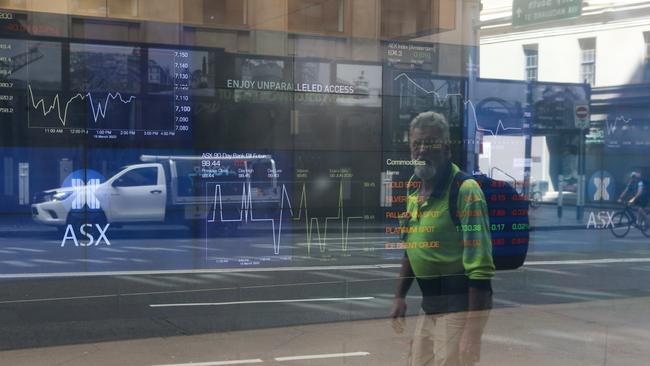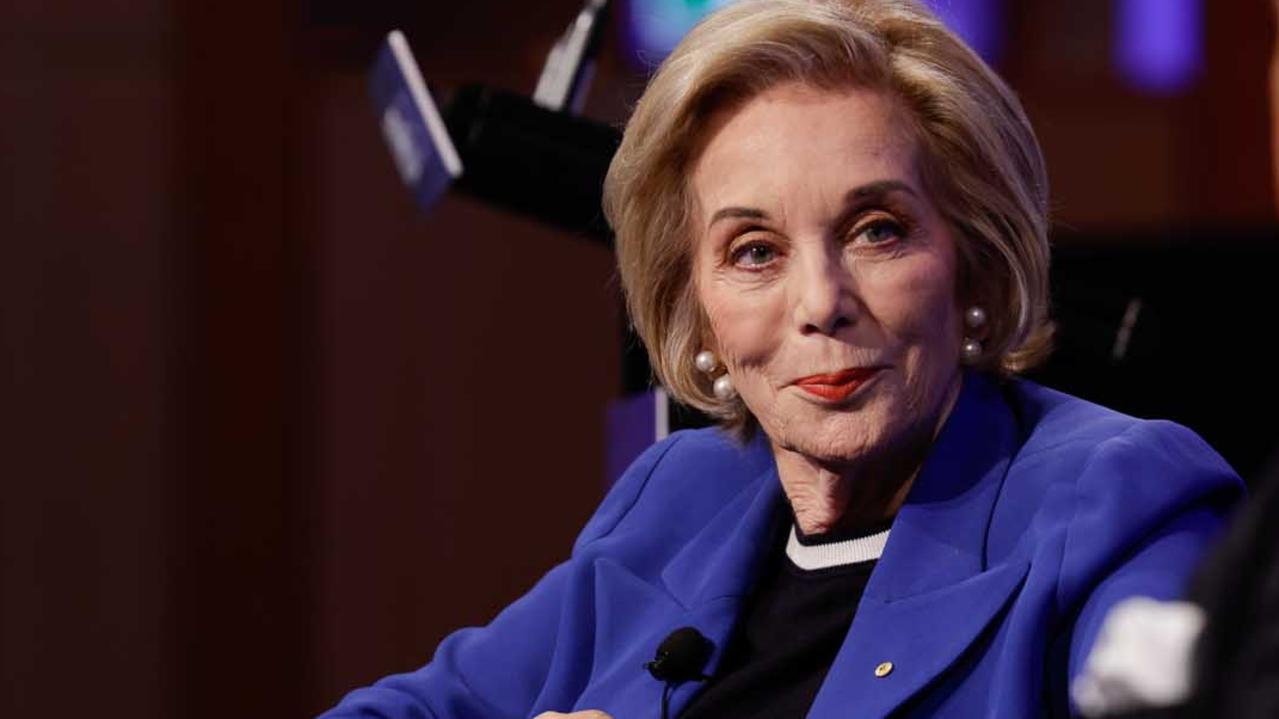Volatility eases but the ‘wall of worry’ remains
Sharemarket volatility is falling and key benchmarks are on the verge of ending recent technical corrections caused by jitters about a multitude of risks.

Business
Don't miss out on the headlines from Business. Followed categories will be added to My News.
Sharemarket volatility is falling and key benchmarks are on the verge of ending recent technical corrections caused by jitters about a multitude of risks including surging inflation, tightening monetary policy, rising bond yields, the Ukraine war, Russian sanctions and soaring oil prices.
There has been no real easing of these headwinds and volatility in crude oil and bond markets remains high.
But the VIX index of volatility on S&P 500 futures has fallen back almost to its long-term average of 19 per cent. Both the MSCI World index and Australia’s S&P/ASX 200 are just one good day away from ending their “corrections” as global sharemarkets climb a “wall of worry”.
An impressive 7 per cent rise in the ASX 200 in the past three weeks has outperformed global markets by 3-4 per cent in currency-adjusted terms. Australia’s commodities exposure has helped, with Macquarie Equities and UBS talking up the prospects for the resources sector this week.
UBS boosted its oil price forecasts on Tuesday, highlighting the bullish implications for energy producers and explorers of crude oil and gas prices remaining well above expectations.
Much of the record $36.3bn in dividends being paid out in March and April from the February reporting season is expected to find its way back into the market.
Volume has been well below average, suggesting that the market is mainly being “sucked” higher by a lack of selling “at market”.
Dividend-related inflows may help push the ASX 200 back up to the record high of 7633 in April. A break above that point could cause expectations of a “melt-up” to new record highs.
But sellers who have been holding off in recent weeks in anticipation of this dividend demand could use buying liquidity to sell at higher prices.
As investors found out painfully in the second half of 2008, damaging bear markets can still occur after the “end” of technical corrections and a return to below average volatility.
While US 10-year bond yields have surged from about 1.5 per cent to 2.5 per cent in less than three months – challenging the valuation of equities boosted by unprecedented stimulus – equities still offer good value relative to bonds at this point.
Citi’s head of US equity strategy Scott Chronert offers another reason why the S&P 500 should be worth 4700 points – about 3 per cent higher than now – by the year’s end.
While investors have been focused on US equity valuation risk as Fed rate hikes commence, his work shows a near zero concurrent correlation between Fed actions and equity returns.
“This is likely the result of a modestly negative correlation between Fed funds direction and the S&P 500 price-to-earnings ratio, and a stronger positive correlation between the monetary policy path and earnings growth,” he said.
While the market tends to put a lower PE valuation on shares when the Fed tightens, such action tends to coincide with stronger growth and corporate earnings, which are bigger drivers.
“The issue is the push-and-pull effect of the valuations and earnings drivers of markets,” he said.
“The positive correlation of S&P 500 earnings growth to the Fed funds path is stronger than the negative valuation relationship. Lower multiples during Fed tightening are typically applied to rising earnings.”
His analysis suggests valuation pressure from expected policy changes are “mostly priced-in”. But he’s wary of the potential for divergent economic growth and monetary policy.
“A negative growth shock coupled with tightening policy frames the downside,” he said.
Perceived policy missteps, a subsequent de-rating, and earnings degradation could drive a bear market, but earnings resilience continues to underpin his base case.
“We remain constructive on markets on intact index EPS expectations, but recognise valuation overhangs that should linger on geopolitical and policy concerns,” Mr Chronert said.
His S&P 500 earnings estimates now show some conservatism compared to consensus.
But one question is whether the current situation is different to the average since 1970. The Fed now seems to be prioritising inflation over supporting growth.
Also, in the 12 rate tightening cycles since 1955, the US has ended up in recession three-quarters of the time. Of course since 1980 it has then gone on to cut rates to lower and lower levels.
“Even in the best of times, trying to avoid an economic slowdown while tightening monetary policy is like trying to land a 747 on an aircraft carrier,” said T. Rowe Price head of Australian equities Randall Jenneke. “It seems President Putin has made the landing more challenging.”
Still, he said “periods of panic tend to be short-lived and have presented opportunity”.
“Today, some of Australia’s most innovative companies with solid longer-term growth prospects are trading at depressed valuations. This is a time to take a breath and increase your time horizon – the risk/reward set-up has markedly improved for some of Australia’s highest quality and strongest growing companies.”
Originally published as Volatility eases but the ‘wall of worry’ remains



